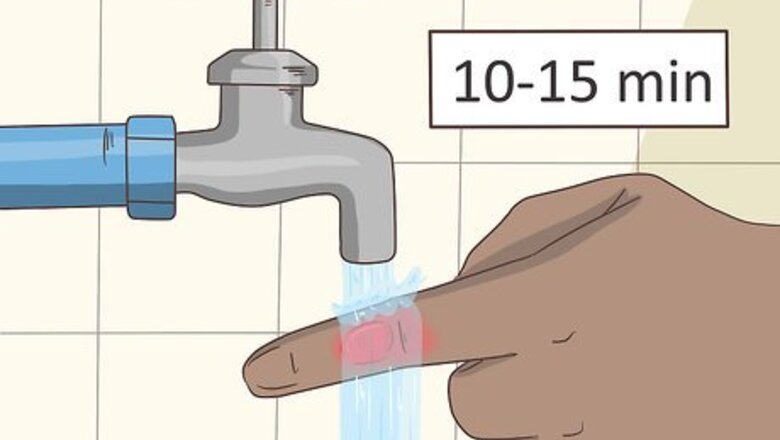
views
Administering Prompt First Aid
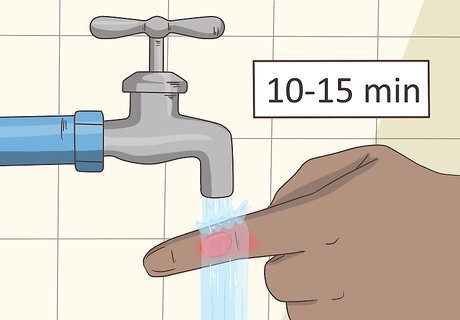
Plunge your finger into cool water. After removing your finger from what burned you, place it under cool, running water. Hold it in the water for 10-15 minutes. You can also wrap it in a towel soaked with cool tap water for the same amount of time, or submerge the body part in a container of water if you don't have access to a running tap. This can minimize pain, decrease swelling, and prevent tissue damage. Avoid placing your finger under cold or warm water or in ice. This can make the burning and blistering worse. Cool water cleans the burn, reduces swelling and promotes quicker healing with less scarring
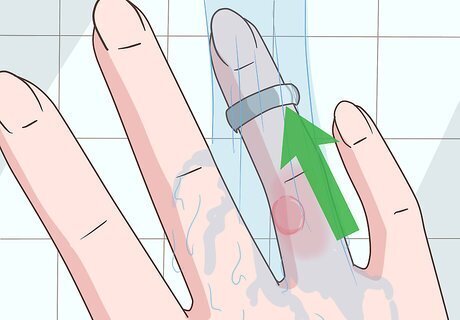
Remove jewelry or other items under cool water. Cold can help reduce swelling. While you are cooling off your finger with water or a damp towel, take off rings or other tight items around your fingers. Do this as quickly and gently as possible before the area swells. This may minimize the discomfort of removing them when dry. It also allows you to better treat the burned and blistered finger.
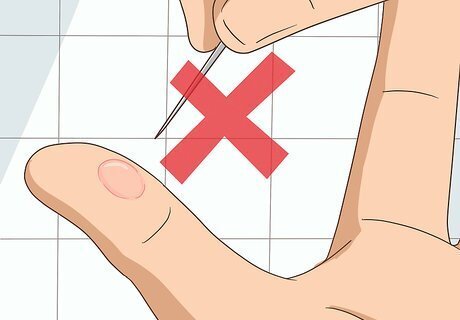
Avoid breaking blisters. You may immediately notice small blisters that are no bigger than a fingernail. Leave these intact to prevent bacteria growth and infection. If the blisters break open, gently clean them with mild soap and water. Then apply and antibiotic ointment and nonstick gauze bandage. Get prompt medical attention if the blister is large. Your doctor may need to break it to minimize the risk of it breaking on its own or developing an infection.
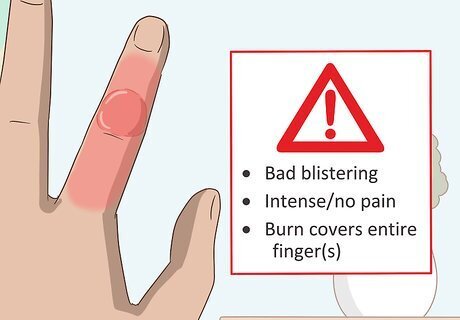
Seek emergency medical attention. In some cases, burns with blisters may require immediate medical attention. If you have any of the following symptoms, go to your nearest emergency room or urgi-care center: Bad blistering Intense or no pain Burn covers your entire finger or fingers
Cleaning and Dressing Your Burn
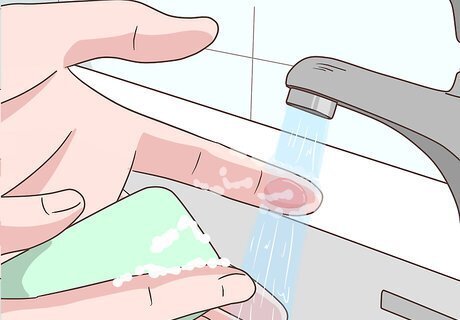
Wash the burned and blistered area. Use a mild soap and water to gently clean the affected finger. Rub the area gently, being careful to not break any blisters. This can minimize the risk of infection. Treat each finger with a blistering burn separately.
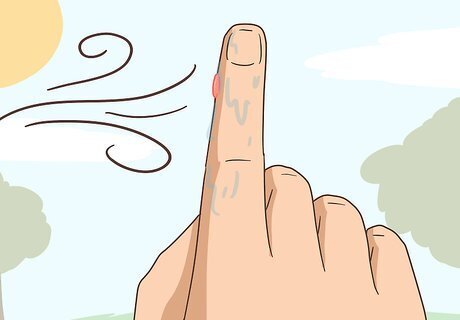
Air-dry your finger. A burn develops for an additional 24-48 hours after contact. Things such as patting it with a towel can make your pain and discomfort worse. Allow your finger to air dry before dressing it with ointments and bandages. This can draw heat from the burn, reduce the chances of bursting a blister, and minimize your pain.

Cover with sterile gauze. Before applying any ointments, let the burn cool. Placing a loose, sterile bandage over your blister allows the area to cool and can protect it from bacteria. Change the gauze if you have any oozing or broken blisters. Keeping the area clean and dry can also prevent infection.

Apply ointment to unbroken skin. After 24-28 hours, put on a healing and protective ointment. Do this only if the blisters are still intact and the skin is unbroken. Spread a thin layer of any of the following over the top of the burned and blistered area: Antibiotic ointment Unscented, alcohol-free moisturizers Honey Silver sulfadiazine cream Aloe gel or cream

Stay away from home remedies. An old wives’ tale suggests using butter on burns. However, butter retains heat and can cause infection. To prevent the burn retaining heat and protect the area from infection, avoid covering your burn with household treatments such as butter and substances like: Toothpaste Oil Cow dung Beeswax Bear fat Eggs Lard
Recovering from Blisters and Burns
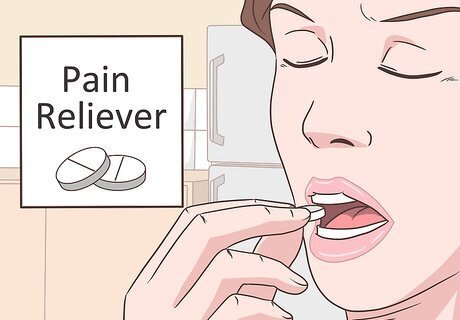
Take a pain reliever. Blistering burns can be very painful and swollen. Taking aspirin, ibuprofen, naproxen sodium or acetaminophen may reduce your discomfort from pain and swelling. Follow contraindications and dosing instructions from your doctor or the product labelling.

Change dressings daily. Keep your bandages as clean and dry. Change them at least once every day. If you notice any oozing or wetness, put on a new bandage. This can protect the blistered burn and prevent infection. Soak a dressing stuck to the burn or blister in clean, cool water or saline.
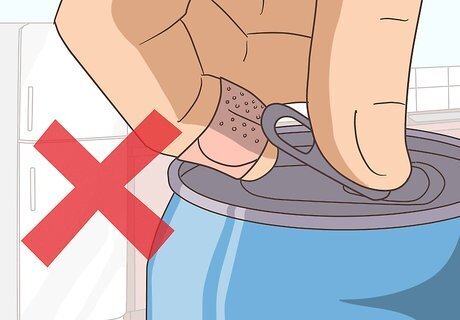
Avoid friction and pressure. Bumping into and touching things as well as putting friction and pressure on your finger can make a blister pop. This can disrupt the healing process and lead to infection. Use your other hand or fingers and avoid wearing anything tight against the area.
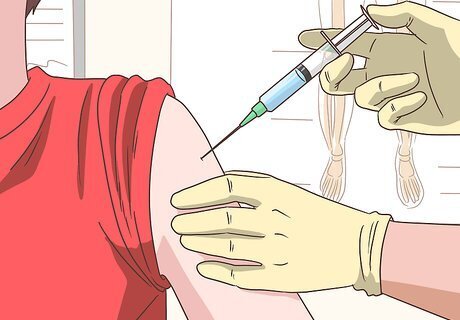
Consider a tetanus shot. Blistering burns can become infected, including with tetanus. If you haven’t had a booster tetanus shot in 10 years, ask your doctor to give you one. This may prevent you from developing tetanus because of the burn.
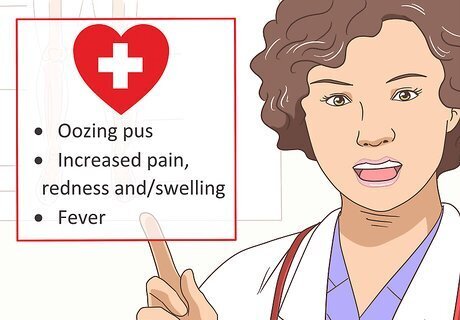
Watch for signs of infection. Your burn may take some time to heal. In some cases, you could develop an infection, as burns can easily become infected. This could lead to bigger problems such as losing mobility in your finger. Seek immediate medical attention if you have any of the following signs of infection in your wound: Oozing pus Increased pain, redness and/or swelling Fever
















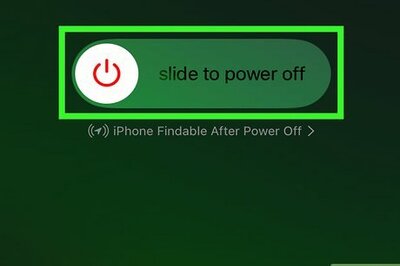
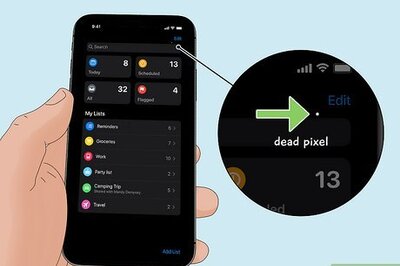
Comments
0 comment